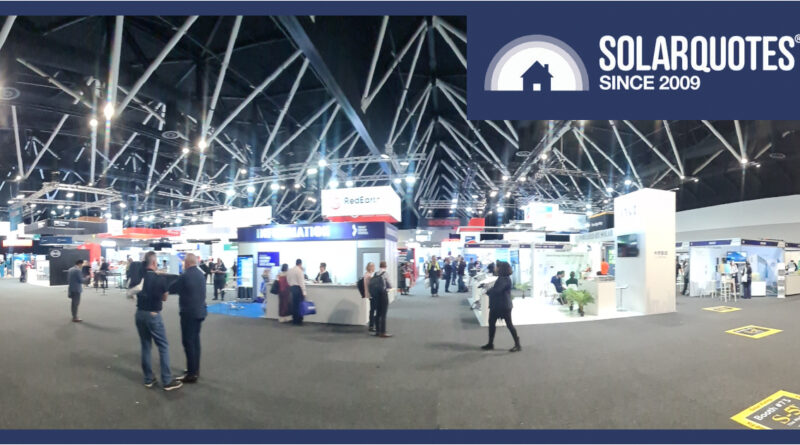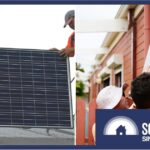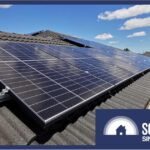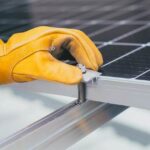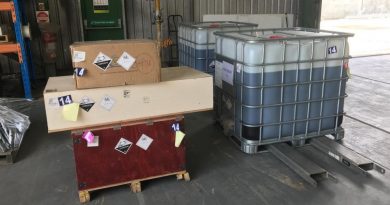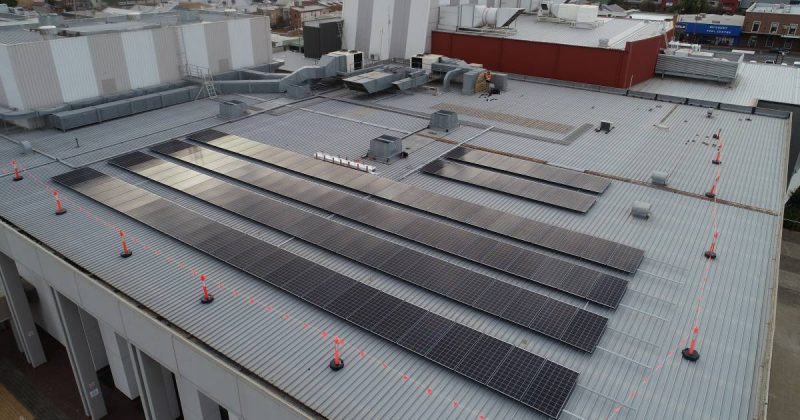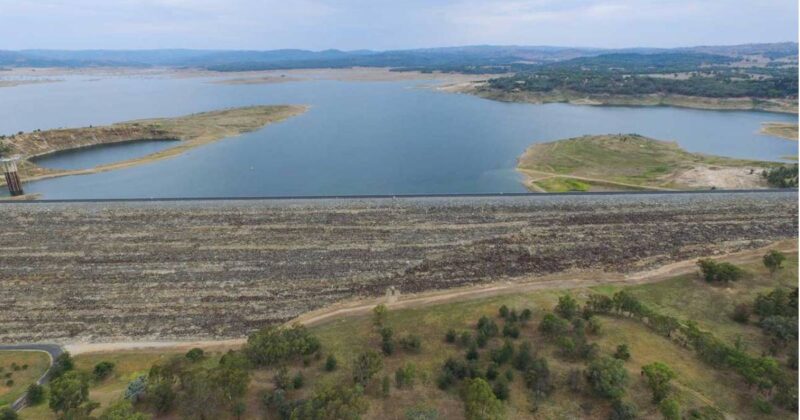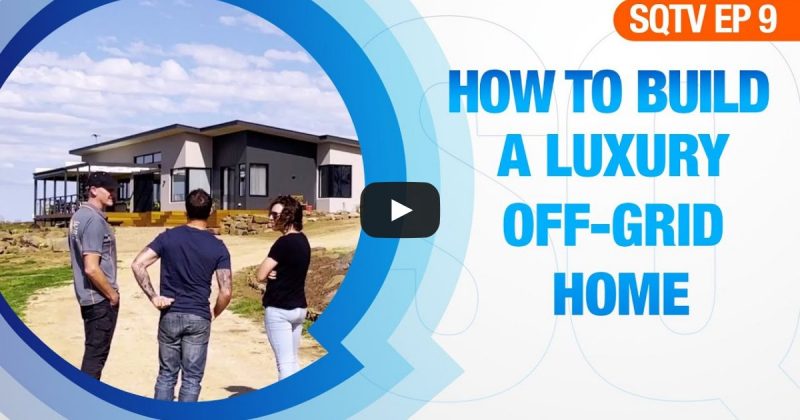Unmasking The Energy Illuminati: Notes From The Smart Energy Conference
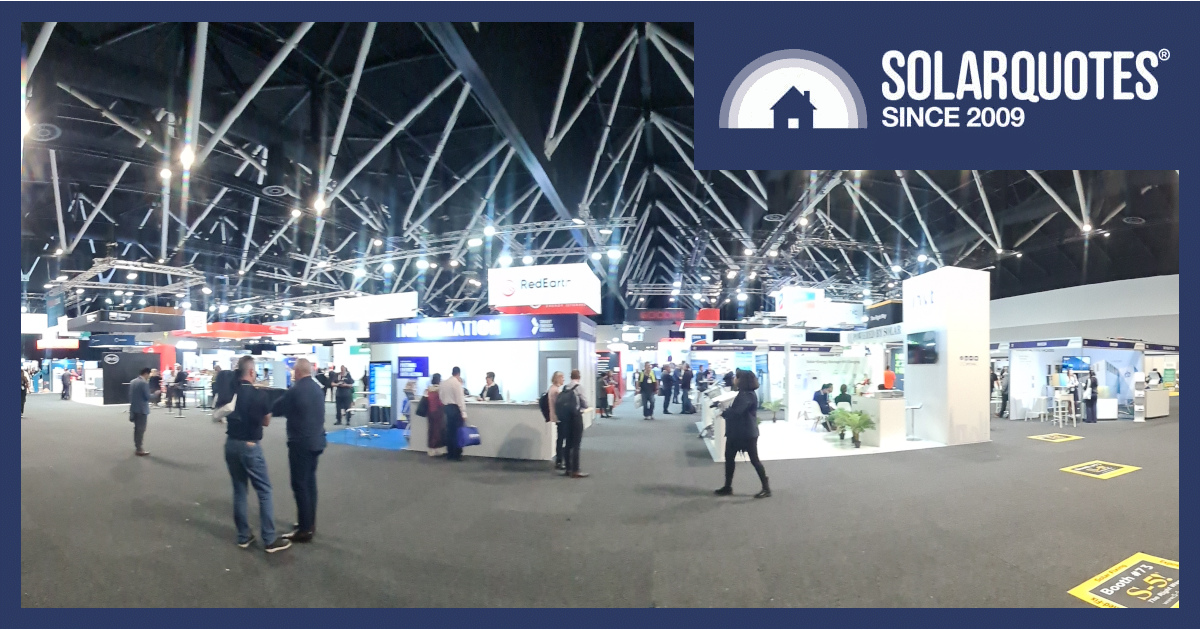
All of this energy industry technology and here’s me with a flat phone battery.
Dear reader, I’ve taken the plunge and weathered another trade show, Smart Energy 2023, so you don’t have to.
Peeling Back the Curtain: What Really Happens at Solar Trade Shows?
Solar conferences and tradeshows play a crucial dual role for installers – like me – who attend. On the one hand, it’s impressive to see the vibrant displays, perfectly assembled panels, and pristine inverters minus the messy wiring, but let’s cut to the chase: the primary lure for installers is the pursuit of Continuing Professional Development (CPD) points.
For some, CPD is a necessary evil to maintain their Clean Energy Council (CEC) accreditation – a must-have for installing solar systems. Some of these points can be conveniently accumulated from home through online courses like those offered by their local electricity networks (DNSPs). The problem is that the CEC insists you get 100 points, and in many cases, the money-hungry CEC charge money for those points. The public should be under no illusion: the CEC is a private company pretending to be a public authority.
The manufacturers are our saviours, though. They run technical courses which have been vetted and approved by actual registered training organisations. So while they promote their product and its advantages, they also throw in broader industry knowledge to keep the tradespeople on the ground up to date. Manufacturer training is something that all electricians should do, honestly.
So, when you spot the electricians and tradies making their way through the conference, they’ve taken a day off from their demanding rooftop jobs (which comes with its own expenses) to attend sessions in the smaller side rooms. Their goal is to learn as much as possible and, of course, to earn those precious CPD points.
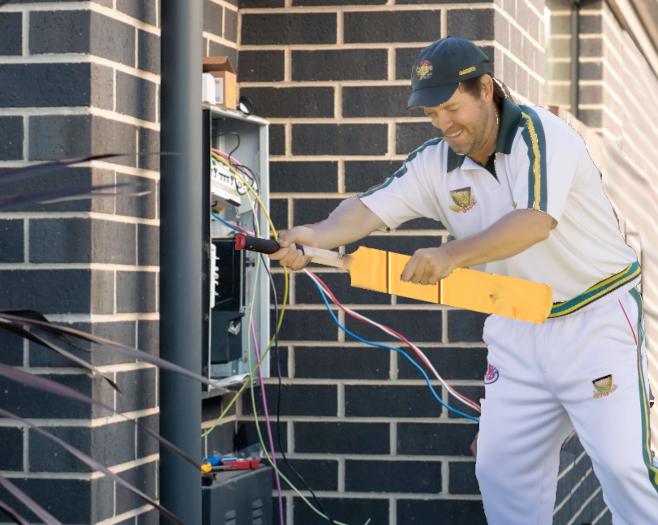
We didn’t see these guys at the technical presentations for some reason. It’s a good reason not to trust a superannuated sports star to sell you solar.
The Trade Show Dichotomy: Education and Extravagance
On the other end of these trade shows are the grand presentations by what I’m terming ‘The Energy Illuminati’: the CEOs, the experts, the scientists, and the ministers (who annoyingly always seem to bugger off before you can ask questions).
Even star power shows up, like cricket captain Pat Cummins with his “Cricket for Climate” project. That bloke has much more credibility than the has-been cricketers pushing cheap rubbish solar on TV.
Last but certainly not least, we also heard from Saul Griffith, chief scientist with Rewiring Australia. I’m pleased to say I met him and had a few words, but I didn’t geek out enough to have my laminate signed or get a selfie. In retrospect, that would have made a good image to post here. I should have lined up.
Takeaway #1: Urgent Need for Fuel Standards
Australia is on the brink of becoming a dumping ground for obsolete vehicle technology. Manufacturers prioritise countries with strict emissions standards, supplying them with cleaner, cost-effective models. We, as a nation, could save billions by updating our laws to match the reality observed overseas for years.
Applying a fleet average fuel consumption target to imports will force the particularly recalcitrant manufacturers to shift toward electrification, not just better fuel efficiency in their legacy models.
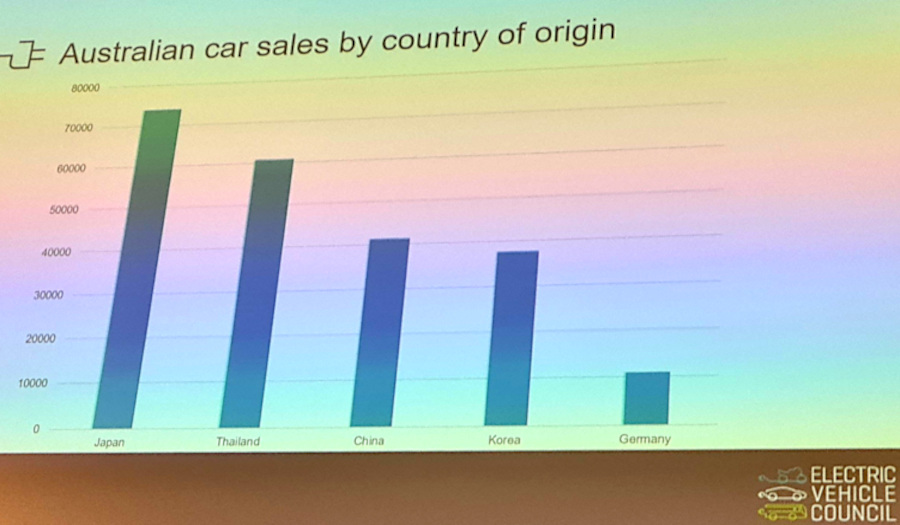
Thailand is where many brands and models of the dreaded dual cab ute come from.
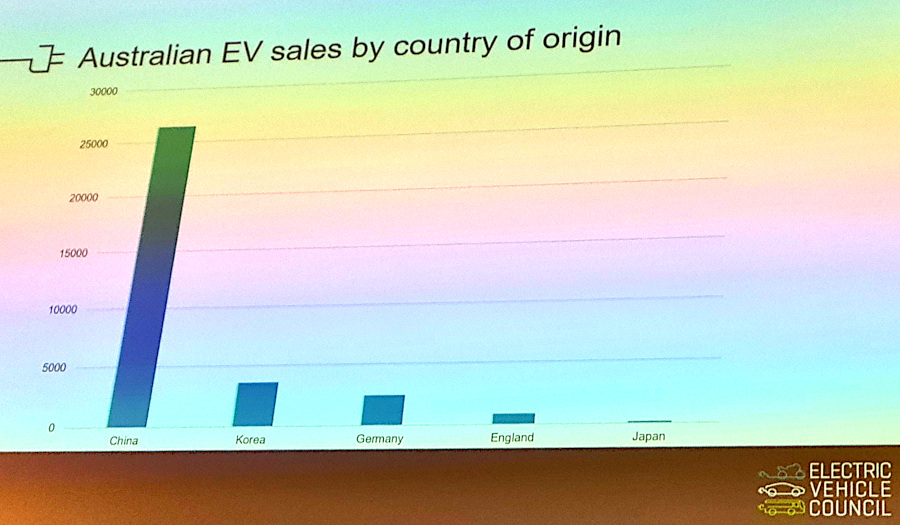
Despite being the market leader in current technology, one economic superpower has missed the bus in the emerging EV segment.
Takeaway #2: The Recurring Theme is Storage, Storage, Storage
Whether it’s large-scale grid issues or individual consumer concerns, the battery is the shining star of any energy industry forum these days . But, we should also not overlook demand response, a tried and true method already saving us for years.
While storage will be critical going forward, the cheapest way to reduce costs is to reduce what you’re using. Getting paid to turn things off is a perfectly sensible approach, even if the (non)experts in the comment section of your favourite social media are screaming, “we’ll all be roooooned” if you dare suggest they surrender a little control of their air conditioner for the greater good.
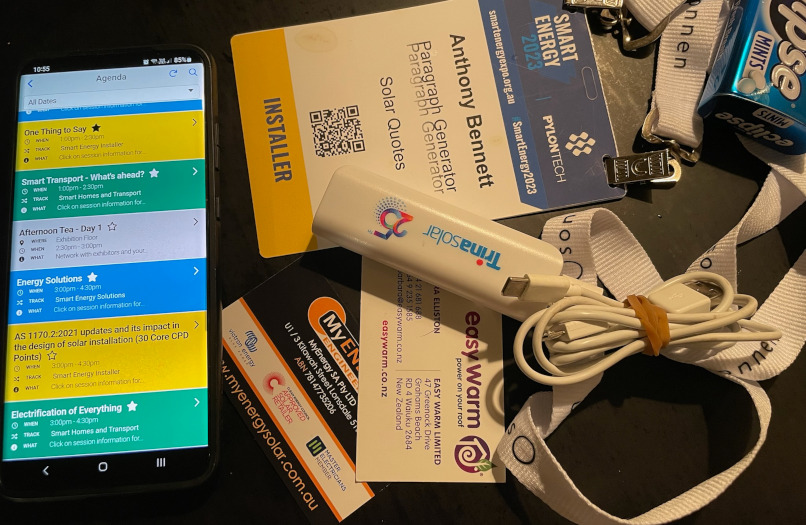
The basic conference toolkit includes a QR code for swapping email, cards for when that fails and a spare phone battery.
Takeaway #3: Electrification Needs Better PR Than Gas
As I mentioned earlier, Saul Griffith now has to deal with groupies. In a matter of months, he’s become the electricifcation figurehead by speaking, writing and lobbying in a way that’s digestible by technicians, laymen and even MPs.
A real nugget I found in his rapid-fire presentation was the electrification of his home postcode. It’s a pilot program we must embrace in every other postcode as we ReWire Australia.
Around $20 million is spent annually on energy in postcode 2515. Three-quarters of that come from fossil fuels (cars and gas in the home), and one-quarter of it from grid power.
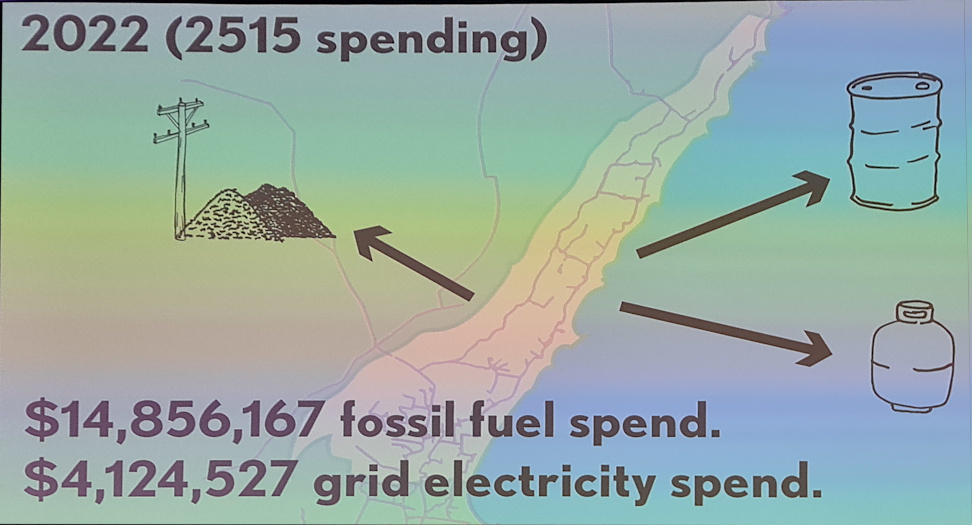
To clarify, in the year 2022, spending on energy was around $20,000,000 in the postcode 2515.
“Most of that money is being spent at the one petrol station in the community, where they also sell you nicotine and sugar – three things that can kill you in one place,” Griffith says.
“Fast forward to the future if we we can easily generate at least two thirds and potentially all of our electricity if we fully utilize our rooftop and community assets.”
“We’d be creating a million and a half dollars a year in local electrification to labour about 25 jobs. We’d be saving about $21 million a year.”
“The real point is if we are not spending that money at the petrol station, we’re now spending that money and investing in our communities, This is how we create an unbelievable number of local, real jobs everywhere in the country.”
Decarbonisation Is Urgent
I’ve had more than a passing interest in energy and climate since social studies in year 6. While jetting off to a Sydney conference seems wasteful, I hope the knowledge I share with my readers makes it worthwhile.
“Net zero by 2050 isn’t going to cut it anymore. What we have to achieve is absolute zero by 2040.”
Looking at the Future Through a Farmer’s Lens
Decarbonising a 300-horsepower tractor won’t be easy, but it is possible. And we should electrify it for one reason: Australia imports around 90% of its transport fuel. There’s a fortnight’s supply onshore, six weeks if the boats already under sail make it here.
Electrification will harvest fuel from your rooftop and giant wind turbines instead of paying through the nose to truck it in from an extremist theocracy, via a Singaporean refinery, foreign-flagged ship & tax dodging multi-national fuel distributor.
Electricity is one-third the price of petrol, even less if you have your own solar. In fact, if you use the right retailer offering real-time wholesale prices, there are already times you can be paid to charge your car or house battery. So with a 40kWh battery that comes with wheels and a Nissan badge, coupled to a decent solar system and a charger that goes BOTH ways, you suddenly have a system that soaks up cheap power around midday and also runs your fridge & cooks tea during the expensive evening peak. It’s already here, and so is the surplus clean energy that needs storing.
Rather than watching oil barons build snowfields in the freaking desert, why don’t we keep our money here and do something useful with it? We should be calling out the gas industry for running nonsense and fear campaigns about the future of the Aussie BBQ, because, at the heart of it, electrification is a simple and economical process that we must make easy. Infuriatingly our friends from big gas are whacking some customers with a regulated $1000 bung just for disconnections.
The problem, as I see it, is that even electricians I meet are readily spruiking the gas industry disinformation.
And when you’re at a BBQ, you shouldn’t be fed disinformation by your trusted local tradie.
Original Source: https://www.solarquotes.com.au/blog/energy-illuminati/

